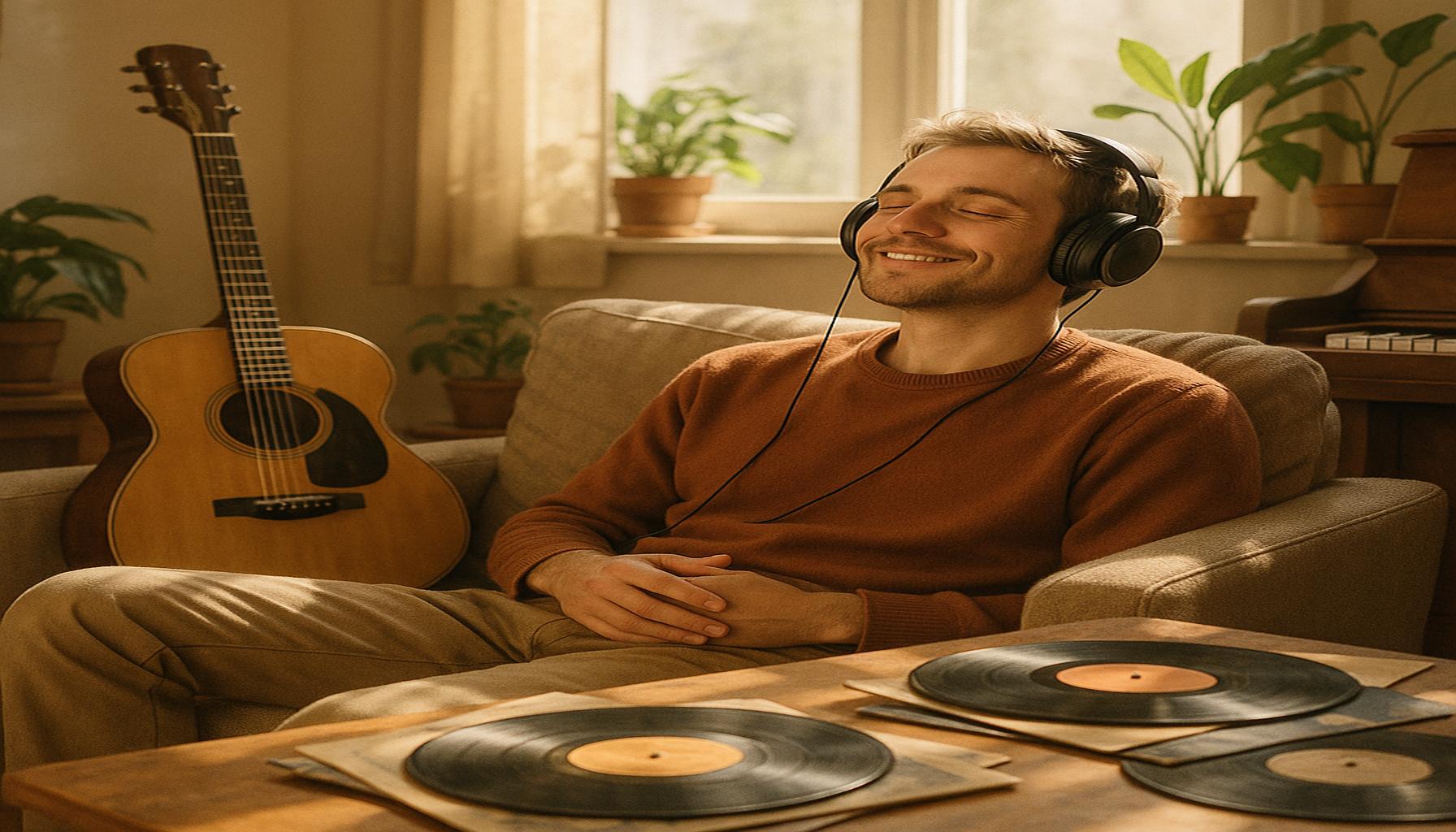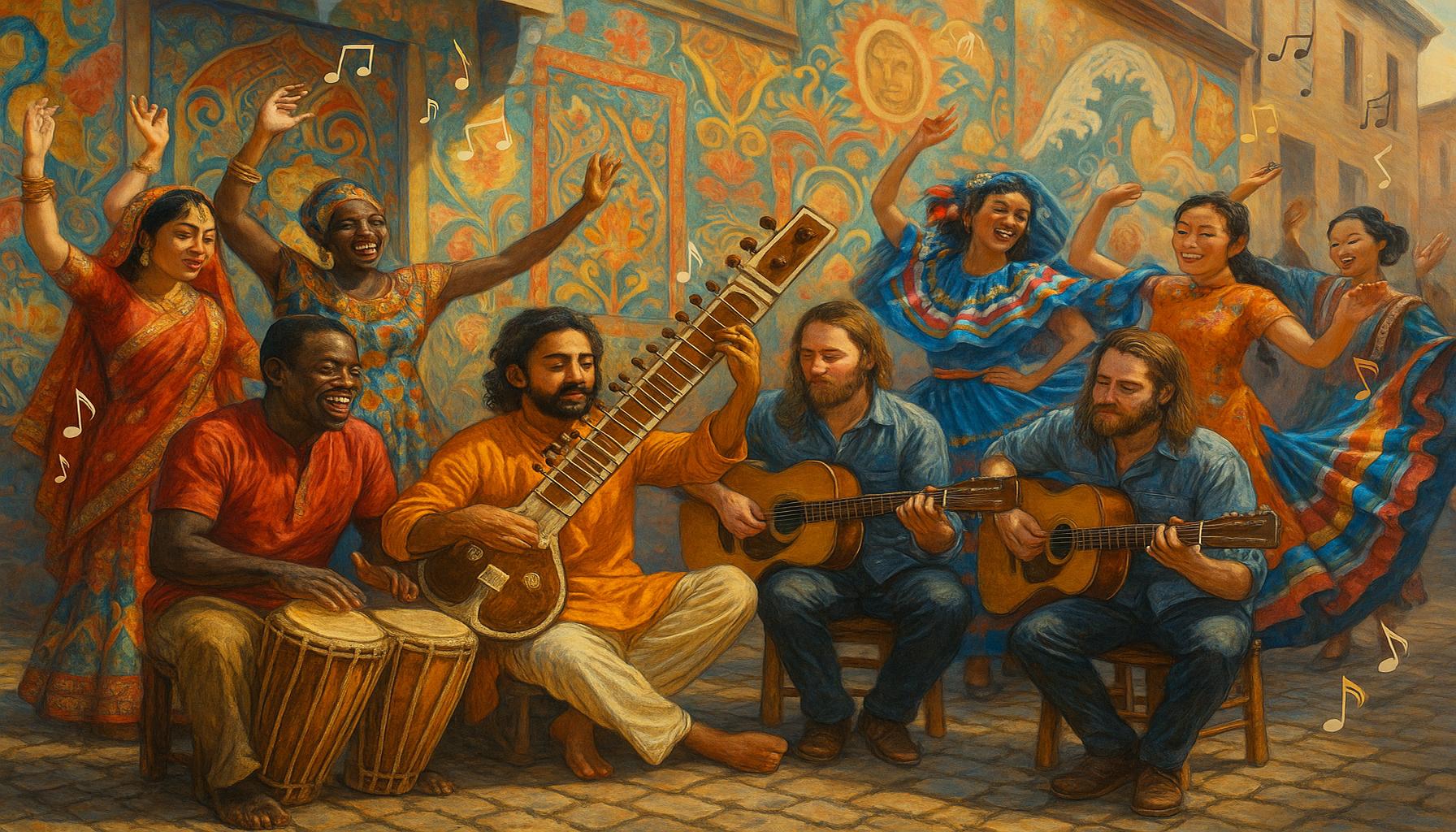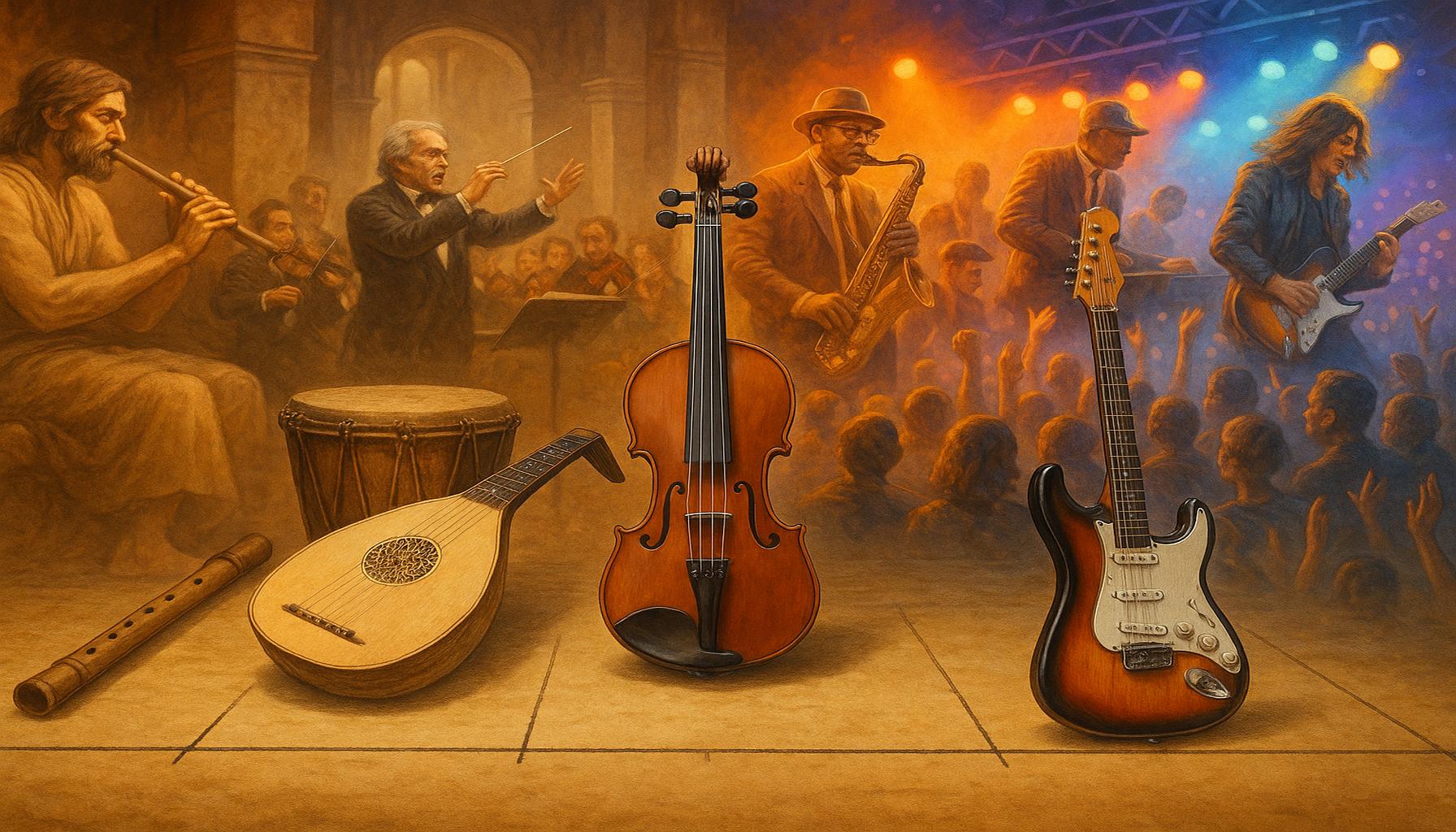Music and Movement: The Interaction Between Dance and Musical Composition in Creative Expression
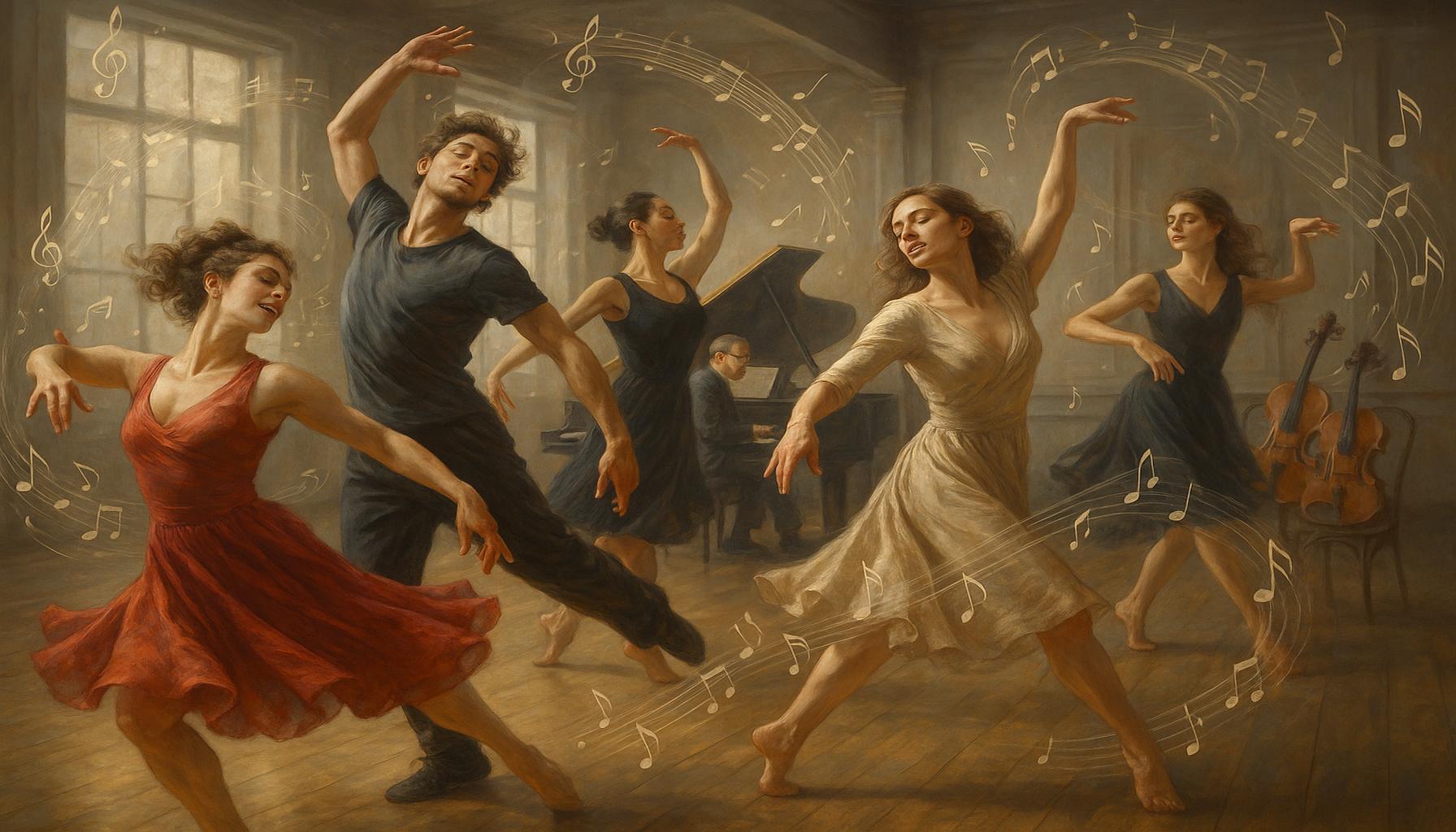
The Intricate Bond between Music and Dance
Throughout history, music and dance have woven a rich tapestry of cultural expression. Together, these forms of art resonate with the human experience in ways that words alone cannot. This intertwining creates a unique and vibrant canvas for creative expression, allowing diverse emotions and stories to unfold in captivating performances.
One of the most compelling aspects of this relationship is the concept of symbiosis. Dance is not merely a visual counterpart to music; it breathes life into the sounds, embodying the emotions and narratives expressed through melody and rhythm. For instance, the smooth flow of a waltz can evoke feelings of romance and nostalgia, with dancers’ movements echoing the gentle rise and fall of the music. Conversely, an energetic hip-hop beat inspires a dynamic style of dance with sharp, rhythmic motions that speak to freedom and self-expression.
The cultural influence that music has on dance is evident across numerous genres. Dance forms like salsa, tango, and ballet demonstrate how regional music styles shape movement. For example, salsa draws from Latin rhythms and incorporates vibrant footwork and fluid partner interactions, reflecting the festive atmosphere of Latin American culture. Meanwhile, ballet, originating from the European courts, emphasizes grace and poise, revealing a different aspect of the human experience. Such cultural connections underscore the way music informs and inspires diverse movements, bridging cultures and communities.
Additionally, the collaboration between choreography and composition plays a critical role in this dynamic duo. Renowned choreographers often work hand-in-hand with composers to create performances that highlight both music and movement, achieving a harmonious balance. For instance, George Balanchine, one of the most influential choreographers of the 20th century, frequently collaborated with composers like Igor Stravinsky, crafting ballets that perfectly reflected the intricate nuances of the musical score. This partnership results in performances that resonate powerfully with audiences, transforming mere entertainment into profound artistic experiences.
Understanding the ultimate connection between music and movement invites a more profound appreciation of the arts. It not only enriches our enjoyment of performances but also encourages us to explore the various emotions and stories encapsulated in movement and sound. As we delve deeper into this exploration, we find that the interplay of music and dance is not just about aesthetic enjoyment; it reveals the very core of human creativity, making it a timeless expression of our shared existence.
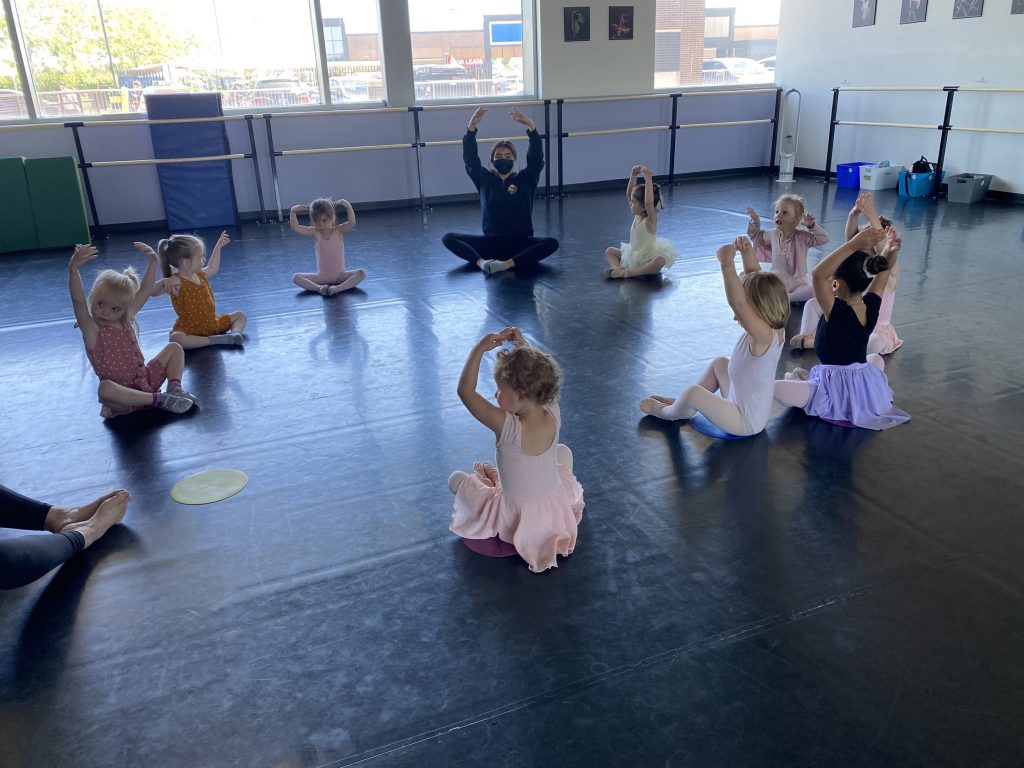
DISCOVER MORE: Click here to learn how to adapt
The Evolution of Dance Styles and Their Musical Roots
The history of dance is deeply intertwined with the evolution of musical composition, showcasing a rich narrative that has shaped artistic expression around the globe. As music has transformed through various genres and eras, so too have the dances that accompany them. Each dance style serves as a reflection of the cultural and emotional landscapes of its time, illustrating the profound connection between music and movement.
Consider the turn of the 20th century in the United States, a period marked by significant socio-political change and innovation in the arts. The emergence of jazz music, with its syncopated rhythms and improvisational flair, gave rise to several dance styles, including the Charleston and swing dance. These vibrant forms of movement conveyed the freedom and exuberance of the Jazz Age, mirroring the feelings of liberation that defined the era. The interplay between jazz music and dance created a dynamic cultural moment that continues to influence contemporary performance art.
On the other end of the spectrum, traditional dance forms such as ballet convey a contrasting aesthetic rooted in discipline and technical precision. Ballet, with its origins in the Renaissance courts, relies heavily on structured choreography set to classical music compositions. The disciplined movements of ballet dancers tell stories of love, tragedy, and fantasy, each pirouette and plié meticulously timed with the accompanying score. This symbiotic relationship emphasizes how classical music’s intricate arrangements can elevate dance into a narrative art form.
Here are some key dance styles and their musical roots that exemplify this interaction:
- Salsa: Originating from Cuban rhythms, salsa dance embodies lively footwork and partner connection, showcasing the vibrant culture of Latin America.
- Hip-Hop: Emerging from urban environments in the late 20th century, hip-hop integrates a variety of music styles, allowing for personal expression through dynamic and energetic movement.
- Contemporary Dance: This genre often blends techniques from various styles, using diverse musical genres to explore new creative boundaries, reflecting societal shifts and innovations in sound.
- Folk Dance: Rooted in cultural traditions, folk dances preserve the music and stories of their communities, often passed down through generations, showcasing the spirit of a people.
The interplay between music and dance goes beyond aesthetics—it serves as a powerful conduit for storytelling, cultural identity, and emotional expression. As artists continue to innovate, experimenting with choreography and musical composition, new styles are born, reinforcing the enduring bond shared between these two art forms. This relationship will not only evolve with time but also challenge our understanding of how we experience and connect with the world around us.
The relationship between music and dance is not just one of mere accompaniment; it is a profound interaction that transforms creative expression. This synergy has been explored across various cultures, revealing the way rhythmic patterns in music inspire choreographic elements in dance. As creators, musicians and dancers collaborate to establish a unique language that resonates with audiences on emotional and psychological levels.
Audiences can witness this connection in live performances where the choreography is intricately tied to the tempo and nuances of the musical score. For example, in genres like ballet, the movement reflects the melody, while contemporary dance may incorporate a more abstract interpretation. This interplay encourages performers to find new depths of expression, often leading to innovative pieces that may challenge traditional norms.
Additionally, the practice of improvisation in both music and dance allows for spontaneous interactions that can lead to unexpected moments of beauty and connection between dancers and musicians. This artistic exploration is not merely about adhering to established guidelines; it invites participants to express their individuality within the composition, fostering a dynamic environment that encourages creativity and personal expression.
| Advantage | Description |
|---|---|
| Enhanced Emotional Expression | Combining music and dance amplifies emotional messages, allowing audiences to connect deeply. |
| Cultural Exchange | The fusion of different styles promotes cultural understanding and appreciation through shared artistic experiences. |
DISCOVER: Click here to dive into the evolution of digital art
The Emotional Resonance of Music and Dance
The intricate relationship between music and dance is not merely one of accompaniment; it delves deep into the emotional fabric that connects performers and audiences alike. Music possesses a unique ability to evoke emotions, and when intertwined with movement, it creates an immersive experience that transcends mere entertainment. This synergy can be seen vividly in dance forms such as modern dance, where physical expressions are fueled by the emotional nuances of diverse musical selections.
For instance, consider the power of a poignant piece of music such as Samuel Barber’s “Adagio for Strings.” The heart-wrenching score calls for movements that embody themes of longing and sorrow. Choreographers often create striking interpretations that reflect the emotional undercurrents of the music, leading performers to explore vulnerability on stage. In such moments, the audience is not just watching dance; they are experiencing a shared emotional journey that highlights the profound connection between sound and movement.
In contrast, many folk dance traditions globally exemplify the manner in which music serves not only as a backdrop but also as a narrative tool that tells the stories of communities. Take, for example, the Appalachian clogging style, often set to lively bluegrass music. Here, the footwork synchronizes with the twang of a banjo or the rhythm of a fiddle, embodying the joyous spirit of a communal gathering. The resulting dance is a celebration of heritage, underscoring how music shapes social interactions and preserves cultural identity.
Dance as a Response to Musical Innovation
As music continues to evolve with technological advancements and cultural exchanges, so do dance styles that respond to these shifts. One notable example is the adaptation of dancehall in the United States, which has its origins in Jamaican reggae music. As dancehall music has gained global prominence, American dance styles influenced by hip-hop have emerged, creating dynamic fusion forms like the “Whine.” This blending of rhythmic complexity invites dancers to explore new ways of interpreting music, resulting in movements that are not only expressive but also communicate the changing landscape of musical taste and cultural influences.
Moreover, the rise of electronic dance music (EDM) has introduced yet another layer of interaction. Festivals such as Coachella and Electric Daisy Carnival showcase various dance styles, where audiences often express their appreciation for the music through vibrant and intricate movements. The pulsating beats and drops create an almost euphoric atmosphere that encourages spontaneous and unrestrained movement. In this setting, it becomes evident that the music is not solely an auditory experience; it becomes a catalyst for creative expression and community bonding.
- Ballet Folklórico: This Mexican dance form highlights cultural history through a blend of indigenous and Spanish music and is characterized by vibrant costumes and precise footwork.
- Capoeira: This Brazilian martial art combines elements of dance, acrobatics, and music, illustrating unique interactions where rhythm dictates movement styles in a playful confrontation.
- Tap Dance: This genre transforms the dancer into a percussion instrument, using footwork that responds to musical elements while simultaneously contributing to the rhythmic landscape.
Through these examples, it is clear that the rich tapestry of music and movement serves as a powerful vehicle for artistic dialogue, providing insights into societal emotions while fostering a sense of connection within communities. As dance continues to evolve alongside musical trends, it invites observers and participants alike to engage in a deeply creative and resonant cultural expression, one that reflects not only the past but also moves toward an ever-evolving future.
EXPLORE MORE: Click here for watercolor techniques and inspirations
Conclusion: A Harmonious Dialogue Between Music and Dance
In closing, the dynamic interplay between music and dance serves as an intricate tapestry of cultural expression that transcends time and geography. The relationship between these two art forms is not stagnant; rather, it evolves and transforms, reflecting the complexities of human emotion and societal change. From the emotional depths of a ballet performance to the spirited rhythms of folk dance, each movement and note bears witness to a rich lineage of shared experiences and communal bonds.
The examples of modern dance responding to poignant music or electronic dance music (EDM) encouraging spontaneous expression at festivals like Coachella illustrate how these forms not only entertain but also connect people on a profound level. They foster a shared journey, one that invites both performers and spectators to immerse themselves fully in the artistic dialogue being presented. As dance continues to adapt in response to musical innovations, such as the fusion of dancehall and hip-hop, it becomes clear that the interaction between these two art forms is vital for pushing the boundaries of creative expression.
Ultimately, the exploration of music and movement opens avenues for deeper understanding and appreciation of culture, history, and emotion. For those seeking to delve further into this captivating dialogue, the journey awaits through workshops, performances, and festivals that celebrate the rich combinations of sound and motion. By engaging with these art forms, we not only witness creativity but also partake in an ever-evolving narrative that binds us to one another and to the world around us.
